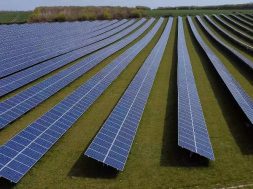
Here’s What Government Testing Tells Us About Solar PV Module Performance
How quickly are solar modules degrading? The data to measure performance is continues to improve.
Government researchers have been monitoring degradation rates closely over the years. And they’re starting to accumulate the data all in one place.
Degradation reviews by NREL of field test studies have confirmed 0.5-0.6 percent median degradation rates per year for crystalline silicon, while thin film and newer silicon technologies exhibit about 1 percent degradation per year (albeit with smaller datasets). PV system degradation rates have been observed as high as 2-5 percent per year.
With linear performance guarantees a wrinkle of the current decade, PV manufacturers have adopted ubiquitous module performance warranties of 90 percent guaranteed power at 10 years and 80 percent power at 25 years for crystalline silicon and thin film technologies.
Previous module degradation testing analyzed data from diverse sources with varying measurement methods and quality. The PV Lifetime Project aims to expand the module service lifetime dataset and increase the accuracy of degradation profiles for PV modules and systems installed and commercially available in the U.S.
Dr. Joshua Stein, the lead for PV lifetime at Sandia National Laboratories, shared the key drivers for the new project. Existing field test data is for older technology and is not reflective of recent technology developments in module production today, he said.In periods of oversupply and consolidation, the PV industry has responded with aggressive price reduction and cost cutting, resulting in complex supply chains. Diverse material quality might therefore result in a wide range of module degradation rates with direct impact on the value of the PV systems and the levelized cost of energy (LCOE).
Most existing degradation tests measured the initial power of PV modules at time zero, and again perhaps one or even five years later. A linear relationship was then extrapolated over time, though accounting for measurement uncertainty.
Some legacy data did not even have an initial measurement, and instead relied on the module manufacturer’s nameplate rating — ignoring module power tolerances and light induced degradation.
The PV Lifetime Project takes a long-term systematic approach to measure degradation rates year over year to determine variability between products and whether degradation rate profiles are indeed linear. If, for example, degradation rates are slower in the initial years and increase later as shown in the figure below, LCOE is lower and PV system payback is faster to the benefit of project economics.The PV Lifetime Project employs repeatable test methods, including module flash testing annually and automated I-V (current – voltage) curve tracers to measure strings triggered by different environmental conditions.
With the I-V curve data, Dr. Stein said: “If we do see changes in the performance, we can better understand what the source of those changes are.” PV Lifetime is planning to monitor the installed systems at the Department of Energy’s regional testing centers for at least 10 years.
Still in its first year, the PV Lifetime Project has installed grid-tied systems with 28 modules each from two PV manufacturers — Trina Solar and JinkoSolar — at the testing centers located at Sandia and NREL. Another system from each manufacturer will be installed at a Florida testing center to cover the gamut of U.S. climate conditions.
In addition, a four-year old SolarWorld monocrystalline PV system was characterized and redeployed at Sandia. Researchers plan to install up to 45 separate systems in the course of the project.
The project is focused on field testing modules representative of current U.S. installations and consults references such as GTM Research’s U.S. PV Leaderboard and other databases to select the module manufacturers. As a result, most of these manufacturers are crystalline silicon based with the exception of First Solar.
Modules are procured from the multiple sources on the open market to obtain an assortment from different batches and serial number bins. If modules must be obtained direct from manufacturers, policies are in place so modules cannot be cherry picked to skew the field test results.
While the PV Lifetime Project is still developing project procedures, a website is planned to share information on systems and their design. Flash test data and I-V curve data will be collected, reviewed, and summarized in near real time. Initial data are already available for indoor module flash testing and field deployments.
Newer PV module technologies are the subject of SunShot’s National Laboratory Multiyear Partnership (SuNLaMP), which will include fifacial, CIGS (copper indium gallium selenide), and encapsulant and backsheet materials.
















